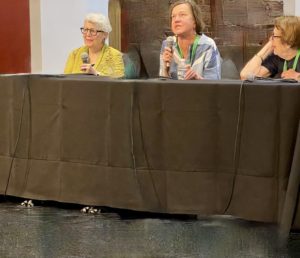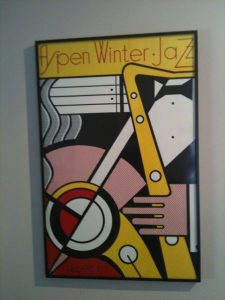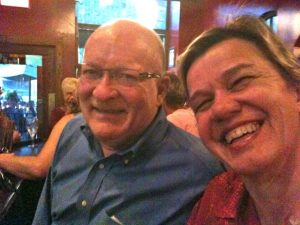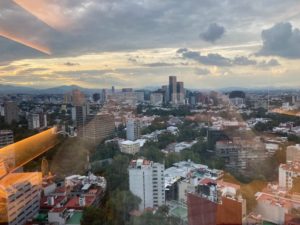Senior Class: Bill’s Coming Out Party
October 23, 2022 • 8 Comments • Posted in careers/jobs for people who are blind, guest blog, memoir writing, teaching memoirI am pleased to welcome Bill Gordon back as our Senior Class guest blogger today. Born and raised in Kansas, Bill lived all over the country during his 45-year career in library and association management. When he retired in 2002, he was the Executive Director of The American Library Association (located here in Chicago) and has called Chicago home ever since.
Having just celebrated his 86th birthday, Bill says life so far has been “a great adventure.” Lucky for us, he enjoys remembering his adventurous life through his participation in the memoir-writing class I lead via Zoom on Thursday afternoons.
Salon, not Saloon
By Bill Gordon
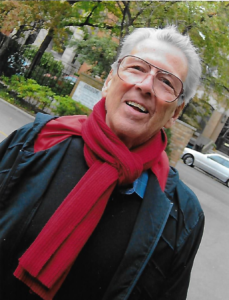
Today’s guest blogger, Bill Gordon
Several years ago I enrolled in Beth Finke’s Memoir Writing class. As I grow older, writing about my life continues to intrigue me. Not for the consumption by others, but because I feel a gentle push to record my life’s experiences for myself – remembering, clarifying memories, creating a record, and finally trying to be honest with myself about who I am and what experiences I have had.
Beth’s approach to teaching memoir writing is to give a prompt and ask each of us to write a 500 word essay relating the prompt to a personal life experience. I have found that looking at my life in 500 word chunks is perfect for the type of record I want to create.
As years go by I find I have written many essays on many topics, always following the lead provided by the prompt. Throughout it all there has been one particular thing about me I’ve avoided writing about, and it’s a very important thing: my homosexuality. I just couldn’t be honest, always managing to skirt the subject no matter what the prompt was.
Until, that is, I found myself writing about the death of my partner. I read that essay in class back before COVID, when we were meeting in person. And guess what? The world did not come to an end. The sky did not fall. The other students did not get up and leave in disgust. In fact, they hugged me, and thanked me for my honesty.
I was 76 years old, and had, at last, “come out.”
And yet, the reticence I’d had towards my sexual orientation continued, making it difficult for me to write about this defining part of my life.
And then I changed classes, still with Beth Finke, but now via Zoom with an altogether new group of people. My new set of classmates make me feel incredibly comfortable, and I find myself writing more and more essays about my life as a gay man. The essays are well received by my classmates, encouraging me to tell more and more about my life in a true and authentic way.
As I became comfortable writing more essays about the intimate parts of my life, I began to feel an urge to share these stories with more people. I thought of the salons I’ve read about: authors, poets, even musicians getting together to share their creations with friends in a social setting for presentation and discussion.
Why couldn’t I do this?
No reason I couldn’t! I just didn’t want anyone to think of it as a personal conceit. Girding my loins for rejection, I invited ten people to my home for a “Reading and Discussion” and subtitled the event “A Slice of a Gay Man’s Life.” I let them know that light refreshments would be served, thinking this might be an inducement for the reluctant attendee.
Seven people came – six men and one woman. Of the other three invitees, one sent regrets. I didn’t hear from the other two.
I read ten carefully selected essays out loud. A lively discussion followed each essay, including comments on the essays, follow-up questions about some of the stories and comments about what gay life was like in mid-twentieth century America.
By any measure, the event was a success. I know this from the feedback and from the response of the attendees during the program. And worth noting: barely a scrap of the refreshments was left
Based on my experience with the “Reading,” I know I will do it again. The setting, as it turned out, was perfect. My living room, friends sitting in a semicircle, the rapt attention of those in attendance, and the comfort I felt telling tales of my life -it could not have been better.
We all love stories – stories about ourselves and others – and with October being LGBTQ History Month, the timing was perfect. Creating a salon atmosphere, in the comfort of one’s home is an ideal setting for storytelling, reading essays, discussing issues. I am glad I overwhelmed my reluctance and strode confidently into exposing my writing to others.

